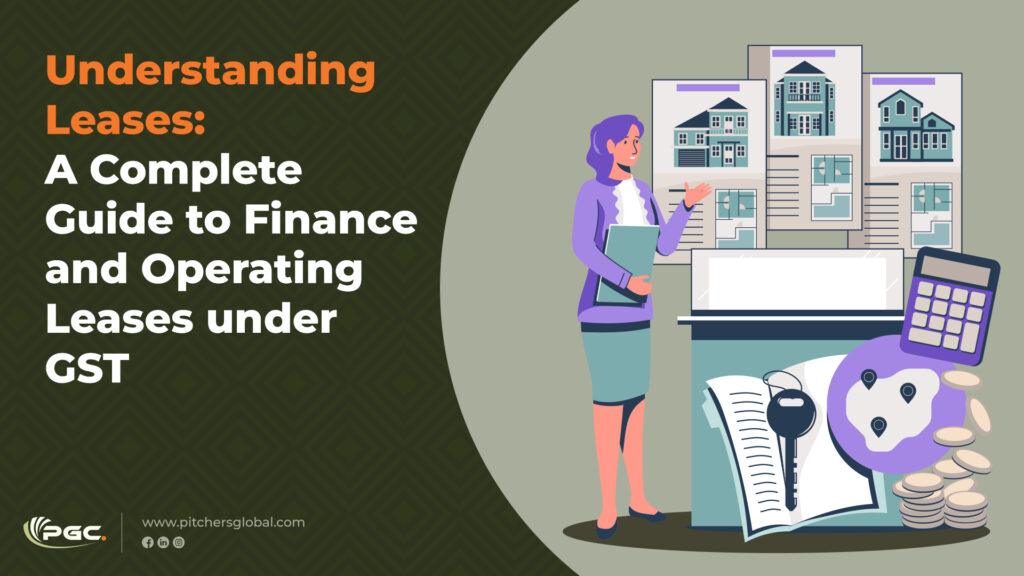A lease is a legal agreement between the owner (lessor) and the user (lessee) in which the lessor grants the lessee the right to use a specific asset (such as land, buildings, equipment, or machinery) for a defined period and under agreed-upon conditions.
So this article will be a complete guide to finance and operating leases under GST!
Leases are generally divided into two main types:
- Finance Lease
A finance lease typically spans a longer duration, sufficient to recover the capital invested by the lessor and generate profit. In this type of lease, all risks and rewards related to ownership are transferred to the lessee, though the legal title to the asset may or may not transfer at the end of the lease term. - Operating Lease (also known as Service or Maintenance Lease)
An operating lease is usually shorter in duration than the asset’s economic life. The lessor is responsible for the maintenance and servicing of the leased asset during the lease period.
According to Section 7 of the CGST Act, 2017, the term “supply” encompasses all forms of supply of goods or services, including sale, transfer, barter, exchange, license, rental, lease, or disposal, made or agreed to be made for consideration in the course or furtherance of business.
GST does not distinguish between finance and operating leases. The determination of the time of supply in lease transactions depends on whether there is a “transfer of title” involved:
- If the lease agreement includes the transfer of title: It is considered a supply of goods.
- If the lease agreement does not include the transfer of title: It is considered a supply of services.
According to Sl No. 5 of Schedule II of the CGST Act, 2017, any lease, tenancy, easement, or license to occupy land is classified as a supply of services. However, as per Sl No. 5 of Schedule III, the sale of land is neither a supply of goods nor services. GST paid on lease rent is eligible for Input Tax Credit (ITC), as it is not included in the list of blocked credits under Section 17(5).

Finance and Operating Leases – Conclusion
Leases play a vital role in business operations, offering flexibility in the use of assets without ownership. Understanding the distinction between finance and operating leases, as well as their treatment under the CGST Act, 2017, is crucial for ensuring proper tax compliance.
While GST does not differentiate between the two types of leases, the classification as a supply of goods or services depends on whether the lease involves a transfer of title. Additionally, businesses can benefit from Input Tax Credit (ITC) on lease rentals, making it important to stay informed on the rules and regulations surrounding leases and GST.

Dive into our insightful guide to finances and operating leases under GST as Pitchers Global makes your journey smoother than ever before.
